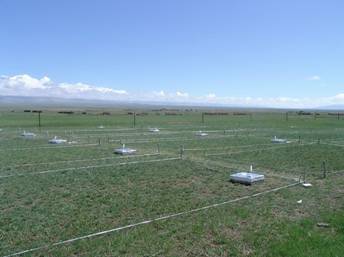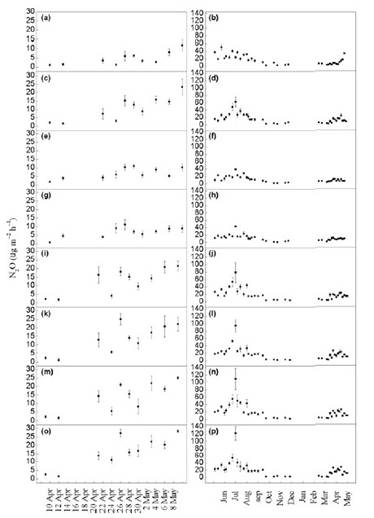No Significant Nitrous Oxide Emissions during Spring Thaw under Grazing and Nitrogen Addition in An Alpine Grassland
2012-05-08
Previous studies often observed soil spring thaw processes occurring regularly in temperate grassland ecosystems and pulse emissions of nitrous oxide (N2O) from thawing soil. Measurements during spring thaw in various ecosystems have revealed that N2O fluxes can be the major important factor for the calculation of annual budgets. In some cases more than 50% of the annual emissions are found in the thaw period.
Nitrogen (N) addition experiments have been conducted in forest, swamp and agricultural ecosystems in China, but the impact of N fertilization on N2O is not well understood in alpine grassland. It remains unclear whether significant N2O emissions during spring thaw can be found with different N fertilizer inputs. N2O emissions from natural grasslands worldwide have been investigated, but few studies have been conducted on the contribution of the spring thaw to annual N2O fluxes. Moreover, most measurements carried out only during the growing season. Therefore, there is a need to measure N2O fluxes throughout the year in alpine grassland ecosystems.
To better understand the regulation of N2O emissions during spring thaw and winter in alpine grassland in the Tianshan Mountains of Central Asia, Prof. LIU Xuejun and his research team established four grazing management sites and four N treatments sites from June 2010 to May 2011 in the Bayanbuluk Grassland Ecosystem Research Station, Chinese Academy of Sciences.
The results indicated that no pulse emissions of N2O were found at grazing management sites and nitrogen addition sites during the spring thaw. The contribution of the spring thaw to the total annual N2O budget was small and accounted for only 6.6% of the annual fluxes, with winter emissions accounting for 16.7% and growing season emissions accounting for 76.7%. The difference in N2O emissions attributable to grazing management was not significant (P>0.05). Nitrogen input tended to increase N2O emissions at N addition sites during the grass growing season compared with those at unfertilized sites. N2O fluxes showed a significant correlation with air temperature and also with both soil temperature and soil water content at 10 cm depth. This research has important significance for estimating and assessing the greenhouse gas emissions in arid temperate grassland.
The main finding has been published on Global Change Biology, 2012. doi: 10.1111/j.1365-2486.2012.02704.x. The paper can be downloaded from http://www.egi.ac.cn/xwzx/kydt/201205/W020120503700074156004.pdf.

Field experiment

N2O emissions at SW site (grazing in winter, a, b), UGI site (ungrazed since 2005, c, d), UGII site (ungrazed since 1984, e, f), LG site (grazed in winter, g, h), N10 site (i, j, 10 kg ha-1 y-1), N30 site (k, l, 30 kg ha-1 y-1), N90 site (m, n, 90 kg ha-1 y-1) and N150 site (o, p, 150 kg ha-1 y-1) in alpine grassland of the Tianshan Mountains.



